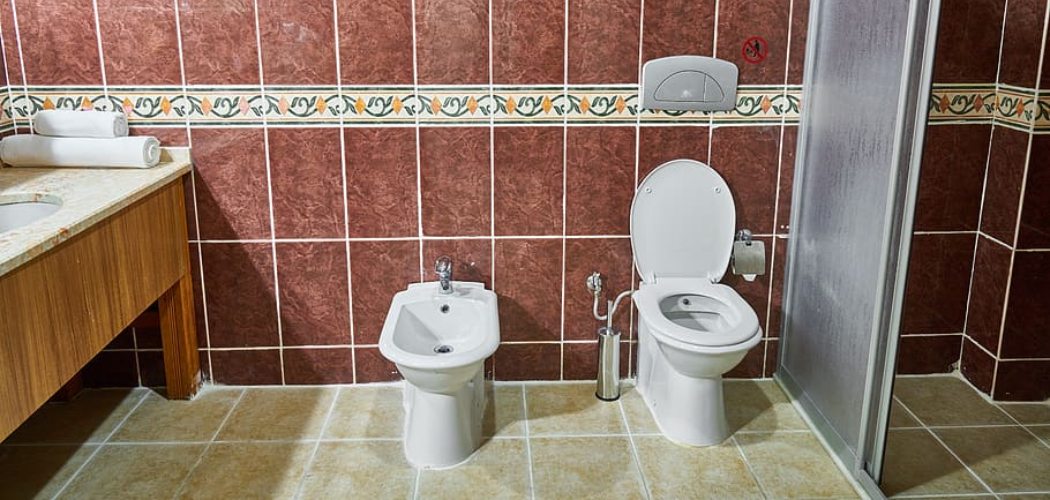Are you looking for ways to make your bathroom more accessible and safe for seniors? The good news is plenty of options are available that can help you create a safe, comfortable environment for elderly members of your household.
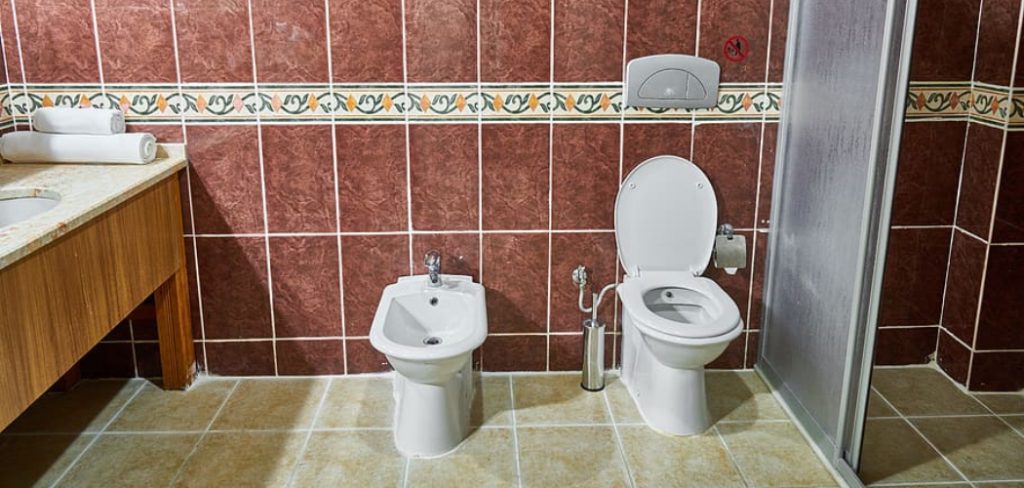
If you have a family member or friend who is an aging adult, they could benefit from having a more senior-friendly bathroom. Making small changes to the design and furniture of the bathroom can help seniors feel safer and more independent when they need to complete daily hygiene tasks.
In this blog post, we’ll take a look at some of the top tips for how to make a bathroom senior friendly. Whether introducing grab bars or slip-resistant flooring, we’ll walk you through all the steps to ensure your elderly loved one feels safe in their own space while giving them autonomy wherever possible.
What Will You Need?
Depending on the modifications you plan to make, you may need a few items to help make your bathroom more senior-friendly. These are as follows:
- Grab bars
- Slip-resistant flooring
- Non-skid mats
- Shower seats/benches
- Walk-in or step-in bathtubs
- Handheld showerheads
- Raised toilet seat
- Lever handles on sinks, toilets, and tubs
- Higher counters or vanities
- Wall-mounted sink for easy access
Once you have all the necessary items, it’s time to begin making your bathroom more senior-friendly.
10 Easy Steps on How to Make a Bathroom Senior Friendly
Step 1. Grab Bars
Installing grab bars in the shower and near the toilet is an essential safety feature for seniors. Most models have suction cups that attach directly to the wall, making installation a breeze. Make sure to get ones with enough weight capacity and look for corrosion-resistant ones for added durability.
Step 2. Slip-Resistant Flooring
Switching out your current flooring to a slip-resistant one can help reduce the risk of falls. Plenty of options are available, from laminate to tile and even vinyl flooring with textured surfaces. Be sure to get a non-slip rug for added safety. As a bonus, it will also help keep the bathroom warmer.
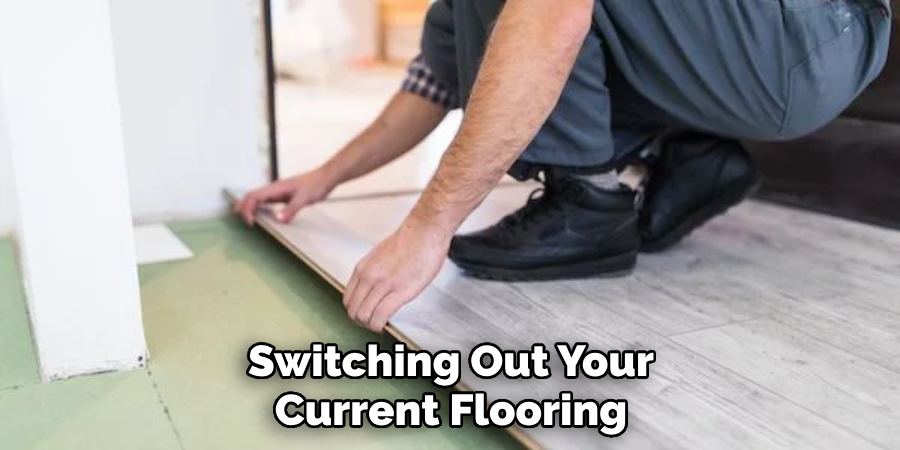
Step 3. Non-Skid Mats
Placing non-skid mats in the bathtub or shower helps prevent slipping and sliding while bathing or using the toilet. Take extra care when selecting mats, as some may not be strong enough to support an elderly individual’s weight. Check labels carefully before purchasing any items intended specifically for seniors.
Step 4. Shower Seats/Benches
Adding a shower seat or bench gives elderly individuals the opportunity to rest while showering, helping them conserve energy and potentially preventing falls. It’s an especially helpful feature for those with limited mobility. Some models are adjustable and can accommodate a variety of heights. Try to look for one that has a non-skid base.
Step 5. Walk-in or Step-in Bathtubs
Walk-in tubs are becoming increasingly popular as they make it easier for seniors to get in and out of the bathtub without stepping over high walls or climbing a ladder. If you don’t have room for a full walk-in tub, consider installing one that includes steps so seniors can enter more easily.
Be careful to select one that is wide enough and has a sufficient weight capacity for your elderly loved one.
Step 6. Handheld Showerheads
A handheld showerhead allows seniors to adjust the water pressure and temperature without stepping in and out of the tub. It also makes it easier for them to clean hard-to-reach areas, such as their back or feet. Make sure the hose is long enough so they don’t have to strain themselves while using it!
Step 7. Raised Toilet Seat
Raised toilet seats are a great way to make toilets more accessible for elderly individuals who may struggle with getting up and down from regular height toilets. They can easily be adjusted to fit any size user and provide additional support when sitting or standing up.
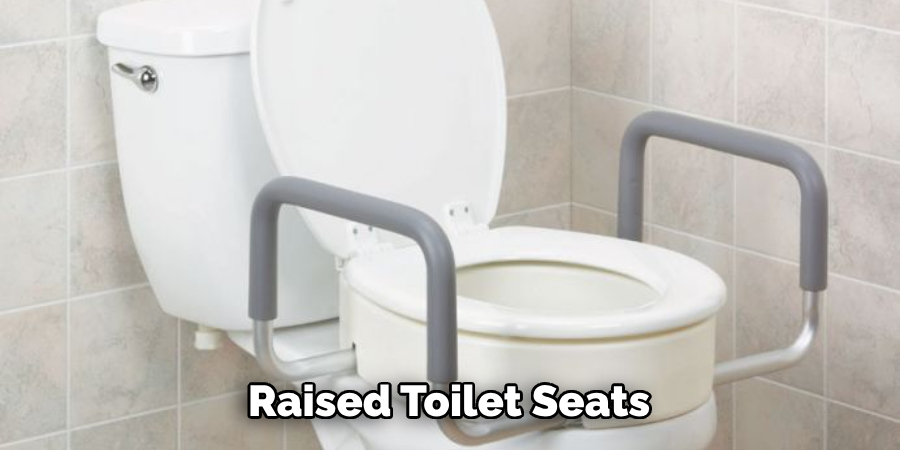
Some models even come with a safety frame that can help users easily get in and out of the toilet.
Step 8. Lever Handles on Sinks, Toilets, and Tubs
Installing lever handles on sinks, toilets, and tubs makes it easier for individuals to turn them on and off without having to use a lot of strength or skill. Look for corrosion-resistant ones with a wide surface area so they’re easy to grip. If possible, try to find ones that match the existing fixtures in your bathroom.
Step 9. Higher Counters or Vanities
Making sure your countertops or vanities are at a comfortable height can help elderly individuals feel more secure when washing their hands or brushing their teeth. Consider installing adjustable counters or vanities to adjust them according to the user’s preference. Remember that seniors may have difficulty bending down, so making sure the height is appropriate can help prevent falls.
Step 10. Wall Mounted Sinks
Wall mounted sinks are a great option for seniors who may find it difficult to bend down and use standard countertop sinks. They’re also easier to clean and maintain, as dirt and debris won’t accumulate around the edges of the sink. Look for ones with wide ledges so elderly individuals can rest their arms while washing their hands.
Small changes like these can help make your bathroom more senior-friendly and give elderly family members or friends the independence they need to complete daily hygiene tasks in a safe, comfortable environment. With some planning and preparation, you can create an accessible and secure area for those who need it most.
5 Additional Tips and Tricks
- use non-slip flooring to reduce the risk of slipping and falling.
- Install grab bars in the shower or beside the toilet to ensure stability.
- Place a chair or stool in the shower for easy access and standing support.
- Install lever-style handles on all faucets and doors for easier use.
- Make sure there is plenty of lighting in the bathroom, with light switches located near the door for easy access. Adding a nightlight can also be beneficial, ensuring seniors can see at night in case they need to get up during the night.

With these tips and tricks, you can easily make your bathroom senior friendly!
5 Things You Should Avoid
- Avoid using rugs, as these can be a tripping hazard.
- Do not use shower curtains, as they can be difficult to manage with limited mobility or dexterity.
- Avoid having any items on the floor that could cause slipping or falling, such as shampoo bottles and other toiletries.
- Do not have high thresholds for entering the bathroom, making it hard to enter without assistance.
- Steer clear of slippery surfaces such as tile floors or bathtubs, which can increase the risk of falls if a senior isn’t careful.
By adhering to these guidelines, you can ensure your bathroom is safe and secure for seniors!
Why is Toileting Important for the Elderly?
Toileting is important for elderly individuals because it helps maintain their independence and dignity. With age, many seniors experience difficulty getting up and down from the toilet due to weakened muscles or limited mobility. Toilet aids, such as raised toilet seats, can help make these tasks easier and more manageable.
Additionally, toileting allows seniors to empty their bladder or bowels when needed, preventing potential accidents or discomfort. Proper toileting also ensures proper hygiene, which helps prevent skin issues or infections. Finally, regular toileting helps keep seniors active and engaged in life activities, aiding overall well-being and quality of life.
Adding modifications like those mentioned above can help make your bathroom senior-friendly and give elderly family members or friends the freedom to complete daily hygiene tasks in a secure and comfortable environment. Whether you’re remodeling an existing bathroom or building a new one, making small changes can have a big impact.
What is a Natural Remedy for Constipation in the Elderly?
A natural remedy for constipation in the elderly is fiber. Increasing dietary fiber intake can reduce the risk of constipation and other digestive issues. Good sources of fiber include fruits, vegetables, legumes, whole grains, and nuts. In addition to increasing fiber intake, drinking plenty of fluids and exercising regularly can also help ease constipation.
Other natural remedies include herbs like slippery elm or psyllium husks with laxative properties. Finally, probiotics may be beneficial as they contain healthy bacteria that can aid digestion and promote regularity.
Making sure your elderly loved ones are getting enough dietary fiber and fluids is essential for keeping them comfortable and healthy. In addition to these lifestyle changes, considering a few modifications to make the bathroom senior-friendly can also help promote independence and provide support when toileting.
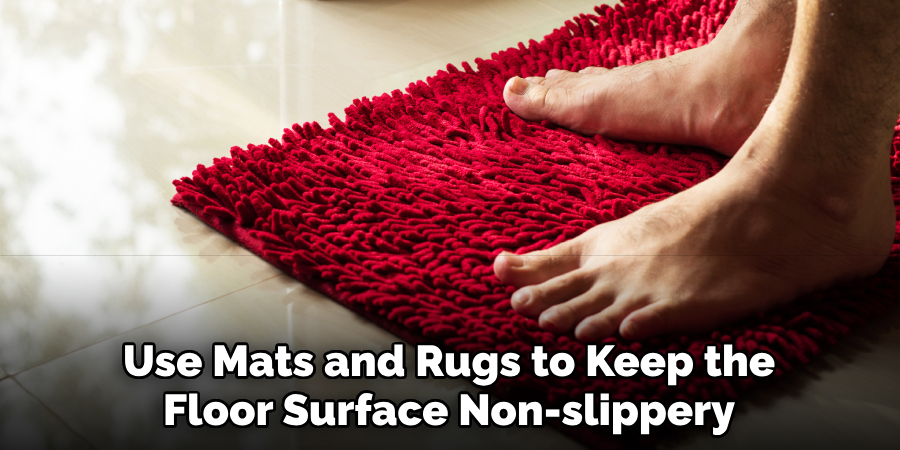
Conclusion
In conclusion, you can easily make your bathroom more comfortable and convenient for seniors.
Use mats and rugs to keep the floor surface non-slippery, add extra lighting to brighten up dark areas, install grab bars in the necessary places, provide easy-to-reach shelves for storage purposes, opt for a low-level toilet and shower seat combination if possible, and use safety devices like night lights or a shower handle to help improve ease of use.
Cover sharp countertop edges with soft foam tape or bumpers to prevent accidental injuries.
With these simple tips and solutions, it’s easy to make any bathroom senior friendly and give your elderly family members an easier bath time experience.
Most importantly, though, is to continue supporting a senior’s emotional well-being by keeping them company during bath times, if possible, or just reassuring them before leaving them alone. Just remember that any efforts, no matter how big or small, are bound to affect any senior’s life in the long run positively.
Hopefully, the article on how to make a bathroom senior friendly has given you some ideas on making bathing and toileting more comfortable for elderly individuals.

